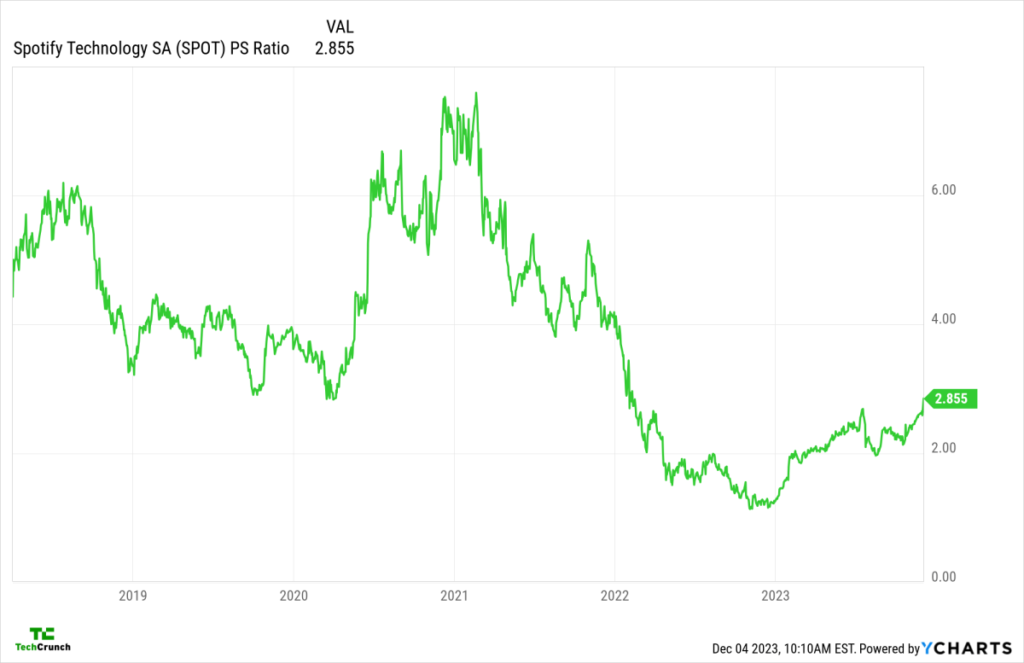Spotify recently laid off 17% of its workforce, raising eyebrows considering the company’s positive third-quarter financials

Spotify recently laid off 17% of its workforce, raising eyebrows considering the company’s positive third-quarter financials. The reason? Corporate and market fundamentals. Despite impressive revenue growth, Spotify’s price-sales ratio has declined, prompting the need for strategic shifts.
The chart reveals two key points: Spotify once enjoyed a higher revenue multiple, and while its price-sales ratio has improved, the company aspires for more. To justify a richer valuation, Spotify aims to accelerate revenue growth, enhance revenue quality, and drive profitability through cost cuts.

However, rapid revenue growth in the saturated music streaming market proves challenging. With global music revenue rising moderately, Spotify’s potential to outpace industry growth is limited. Improving revenue quality faces hurdles too, given the persistent mid-20s gross margins.
Enter cost cuts – the rationale behind the substantial layoffs. Spotify anticipates significant operating efficiencies, expecting to incur €130–145 million in charges. The move may seem callous, but it reflects Spotify’s strategic tinkering to attract investors, aiming for a higher price-sales ratio.
Spotify’s layoffs are a calculated business move to enhance profitability and reshape investor perception. While the short-term impact is evident in severance-related costs, the long-term goal is to position the company as more financially appealing.




